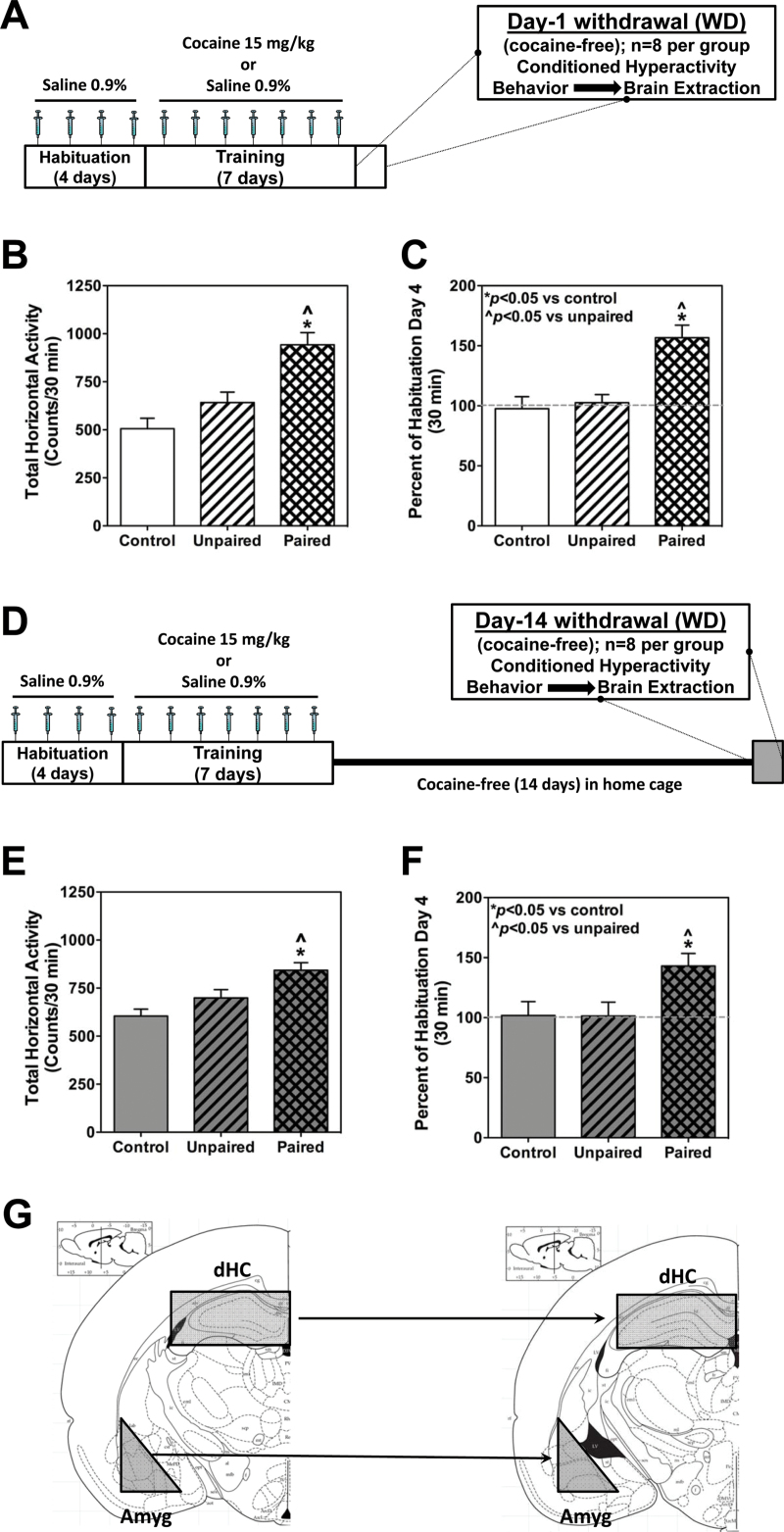Figure 1.
Cocaine-induced conditioned hyperactivity is observed in both (B-C) Day-1 (clear background) and (E-F) Day-14 (dark background) drug-free states. Panels A and D provide a schematic of the training and testing regimen used in the conditioned hyperactivity paradigm. Data represent the mean total horizontal activity counts (±SEM) summed over the 30-minute test session in rats conditioned to 15mg/kg of cocaine in (B) Day-1 drug-free state (cohort of 24 animals, n=8/group) or (E) Day-14 drug-free state (another cohort of 24 animals, n=8/group). While increase in conditioned hyperactivity in the paired group of animals in Day-1 (C) and Day-14 (F) drug-free states, as a percent of the total horizontal activity on habituation day 4, remains the same, the analysis also demonstrates an absence of hyperactivity in the unpaired group of animals compared with control, thus validating the use of this paradigm to delineate the signaling mechanisms affected by cocaine pharmacology in contrast to cocaine-conditioned memory. Following Day-1 or Day-14 test, the animals were immediately sacrificed and the brain removed and sectioned to isolate specific brain regions. (G) A schematic of the coronal section from -2.5mm (left) to -3.5mm (right) bregma (modified from Paxinos and Watson, 2013). After isolating this section, the shaded rectangular and triangular cuts were performed with razor blades to isolate the dorsal hippocampus (dHC) and amygdala (Amyg), respectively, for further biochemical analysis. *P < .05 vs control; ^ P < .05 vs unpaired.

